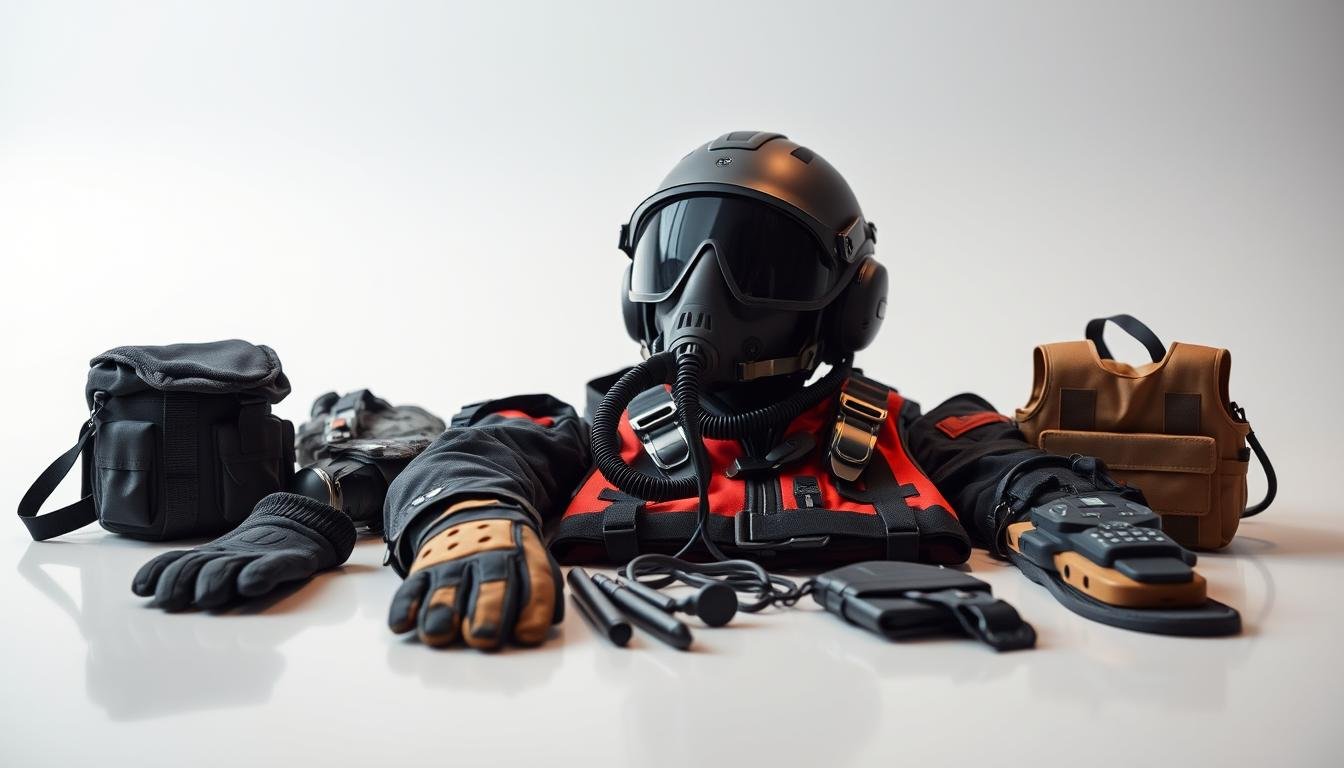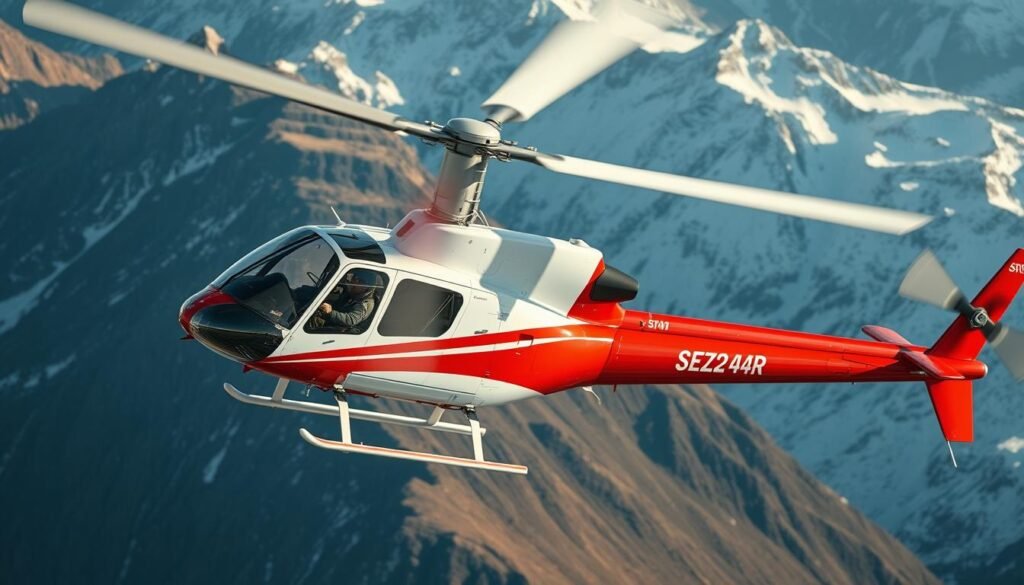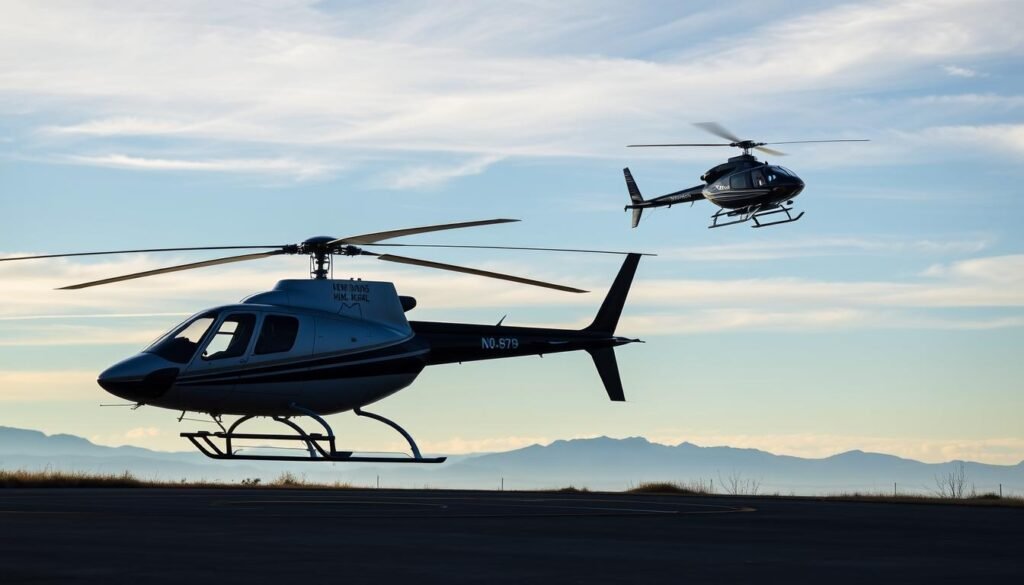Can one compact flight bag really make the difference between a smooth rescue and a costly delay? This guide lays out a mission-ready setup that links personal items, aircraft support tools, and survival essentials into a single, repeatable system.
It emphasizes a paper-first, digital-second navigation approach: master the E6B and plotter before layering in iPad + ForeFlight. Communication choices are clarified too, comparing PNR and ANR headsets and noting premium ANR options for long flights.
The guide lists practical products and procedures—adapters, spare batteries, dual-mode flashlights, PLBs, and key references like FAR/AIM and PHAK—and explains how they are prioritized for day and day-to-night tasking.
For an organized reference to position-specific tools and documents, consult the essential position toolkit linked here: position toolkit. This consolidates trusted products and test prep information into one authoritative resource.
Key Takeaways
- Prioritize a paper-first navigation method, then back it with an EFB.
- Choose ANR headsets for long legs; PNR works for rugged simplicity.
- Stow adapters, spare batteries, and dual-mode lights for fast access.
- Pack compact survival items guided by the Rule of 3s and the 10 Cs.
- Use standardized pocket layout so mission items are instinctive to find.
- Keep current references—FAR/AIM, PHAK, and a physical logbook—for accountability.
Mission Profile And Safety Priorities For SAR Helicopter Pilots
Mission profiles set the sequence for lifesaving actions. Crews must match tasks to real threats. The Rule of 3s guides decisions: mindset, breathable air, shelter, water, then food.
Define phases early: launch, transit, on-scene, recovery. Each phase shifts risk drivers. Mountain rotors, coastal wind, and high density altitude change margins fast.
Training must simulate confined-area work, marginal weather judgment, and low-level navigation. These skills reduce surprises and keep workload manageable.
Safety depends on disciplined behaviors: concise briefs, sterile cockpit windows, strict power checks, and clear abort criteria. These habits cut error chains in routine and emergency ops.
| Phase | Priority | Key Risk |
|---|---|---|
| Launch/Transit | Brief, fuel, comms | Airspace coordination |
| On-Scene | Shelter, breathable air, injury control | Exposure & terrain |
| Recovery | Debrief, log, resupply | Fatigue & equipment |
- Stage personal items so respiratory risks and hypothermia gear stay on-person.
- Clarify roles so one pilot calls aborts and another manages comms and tools.
- Maintain regular scenario-based training to preserve decision-making under stress.
Protective Communication And Hearing: Headsets, Adapters, And Power
Strong audio systems keep crews connected when noise threatens to mask critical calls.
The section explains how choice of headset, plug compatibility, and a simple power plan protect communication and reduce fatigue. It balances practical packing steps with preflight audio checks so teams can rely on clear comms during long, noisy flights.
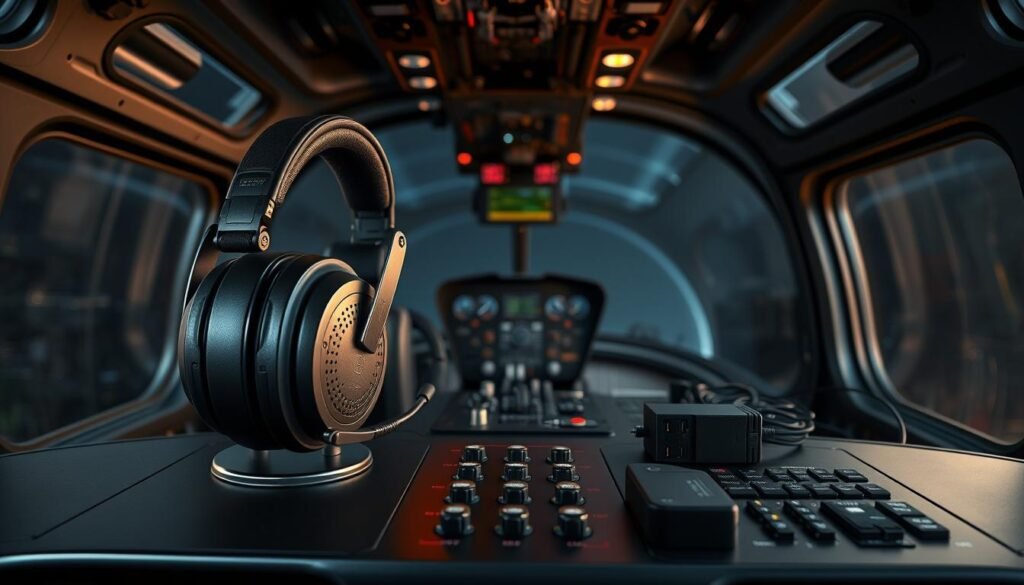
Choosing The Right Headset: PNR vs. ANR And Noise Reduction
Passive noise reduction (PNR) is rugged and budget-friendly. It blocks sound using earcup design and works well for short sorties or rough use.
Active noise reduction cuts low-frequency cabin noise and lowers fatigue. The bose a30 is a premium ANR example that improves clarity and comfort. Many professionals favor TSO-certified models for tested reliability in persistent vibration and high-cabin-noise conditions. For detailed specs see the manufacturer briefing.
Helicopter Plug Types And Adapters: U174, GA-To-LEMO, And Compatibility
Most helicopter headsets use the U174 plug. General aviation headsets use different connectors. Carry GA-to-LEMO and helicopter adapters to avoid last-minute mismatches across mixed fleet and training aircraft.
Power Management: Spare Batteries, Cables, And Reliability In High-Noise Environments
Stage spare batteries (AA/AAA) for ANR modules and handheld devices. Store them with adapters in a labeled pouch so swaps take seconds, not minutes.
| Item | Why It Matters | Recommended Action |
|---|---|---|
| PNR Headset | Durable, low cost | Use for rugged short missions; inspect seals |
| ANR Headset (bose a30) | Reduces fatigue; better clarity | Choose TSO models; check battery/module preflight |
| Adapters (U174, GA-to-LEMO) | Cross-platform compatibility | Label and keep in a dedicated pouch |
| Spare Batteries & Cables | Prevents downtime from simple power failures | Stage AA/AAA, strain-relieve cables, and rehearse swaps |
- Cable routing, mic gain, and intercom squelch checks should be on every audio preflight to avoid misdiagnosed faults.
- Headset fit and hygiene maintain consistent audio quality during handovers and multi-agency comms.
- Keep a compact flashlight for nighttime cable management so operators do not flood the cockpit with white light.
Navigation And Planning Essentials: Paper First, Digital As Backup
Before tapping a screen, crews should master manual plotting to ensure consistent route judgment under pressure.
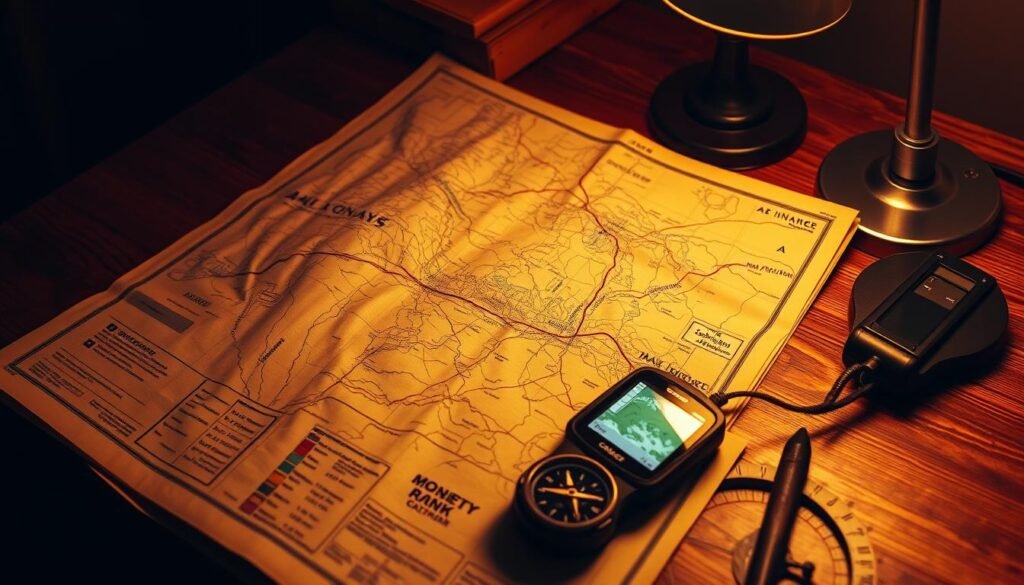
Paper Navigation Kit: E6B Flight Computer, Aviation Plotter, And Current FAA Charts
The core of reliable navigation is paper proficiency. An e6b flight computer gives wind correction, fuel planning, distance, and time calculations that training reinforces.
An aviation plotter makes course and distance plotting precise. Current FAA Sectional and terminal charts—updated every 56 days—ensure coverage in complex airspace.
Digital Enhancements: Ipad Mini, Foreflight, And Kneeboard Mounts
Use an iPad Mini with ForeFlight as a robust backup after paper skills are proven. Digital tools speed weather updates and route checks.
A kneeboard mount secures both paper and tablet, preserving ergonomics in tight cockpits and during low-level work.
- Training and repetition build quick, repeatable planning habits: performance checks, reserves, alternates, and timing gates.
- Refer to the Handbook of Aeronautical Knowledge for materials that support test readiness and knowledge test prep.
- Coordinate practice sessions with an instructor to integrate terrain, weather, and comms into a single navigation plan.
| Tool | Primary Use | Recommended Action |
|---|---|---|
| E6B Flight Computer | Wind, fuel, distance, time | Practice manual calculations; verify with digital |
| Aviation Plotter | Course plotting | Keep current charts and mark alternates |
| iPad Mini + ForeFlight | Weather, charts, quick updates | Use as backup; mount securely on kneeboard |
Night Operations Gear: See Without Losing Night Vision
Night missions demand lighting that preserves dark adaptation while keeping both hands free for controls and tools. Proper lighting reduces glare, protects night vision, and supports safe decisions during low-light approaches. The following items keep crews effective on the ramp, at the scene, and in the cockpit without sacrificing situational awareness.
Hands-Free Headlamp With Red Light For Cockpit Use
Red-mode headlamps preserve dark adaptation and let a pilot scan instruments without blinding teammates. Choose models with adjustable brightness and a secure strap or helmet mount. AAA-powered units simplify spares and speed swaps.
Dual-Mode Red/White Flashlight For Preflight And Ground Ops
A compact dual-mode flashlight gives red for cockpit readiness and low-level signaling, and white for detailed component inspection during preflight and ground checks. Pick a model that fits a belt clip or lanyard to reduce drops during hoist or debris-strewn egress.
Backup Power Packs And Spare Batteries For Extended Night Missions
Carry a high-capacity backup power pack to extend EFB and radio runtime in cold conditions. Align spare batteries so AAA cells serve most lights and minimize confusion. Store a compact small first aid item within reach for minor cuts encountered during night egress.
- Lanyards & Clips: Secure lights to the body to prevent loss during dynamic tasks.
- Light Discipline: Use sterile light control during approaches to limit glare and distractions.
- Training: Regular night training validates procedures and refines scanning and light use.
| Item | Primary Benefit | Recommended Detail |
|---|---|---|
| Red-Mode Headlamp | Preserves night vision | AAA cells; adjustable beam; hands-free mount |
| Dual-Mode Flashlight | Inspection & ramp work | Red/white modes; belt clip; rugged casing |
| Backup Power Pack | Extended device runtime | High-capacity; cold-rated; USB-C output |
Survival And First Aid: Rule Of 3s, 10 Cs, And PLB Readiness
When time counts, a focused survival kit gives crews the tools to secure air, build shelter, purify water, and call for help.

The Rule of 3s guides item staging: breathable air, shelter, water, then signaling and food. Pack critical pieces on-person so a separated crew member can act immediately.
First Five Cs: Cutting Tool, Combustion Device, Cover, Container, Cordage
Choose a robust cutting tool (Mora knife) and a multi-tool. Include redundant combustion devices: ferro rod, stormproof matches, and a lighter.
A compact tarp or emergency blanket serves as cover. Use a 32 oz metal container for boiling and purification tablets. Carry authentic 550 cordage with seven inner strands.
Second Five Cs: Cotton Bandana, Compass, Candlelight, Canvas Needle, Cargo Tape
A 3’x3′ cotton bandana, mirrored compass, reliable candlelight/headlamp, canvas needles, and high-adhesion cargo tape extend field capability without bulk.
Signaling And Location: Personal Locator Beacon And Signal Mirror
| Model | GPS Alert | Notes |
|---|---|---|
| ACR ResQLink 400 | Yes | Fast 406 MHz + GPS |
| rescueMe PLB1 | Yes | Compact, reliable |
| ResQLink View | Yes | Simple display; GPS guidance |
Modern PLBs broadcast a precise position to responders even when comms fail.
Medical Readiness: Small First Aid Kit, IFAK, And Tourniquet
Keep a small first aid kit for routine wounds. Add an IFAK with a CAT tourniquet, hemostatic dressings, and compact airway tools for major bleeding and life threats.
Document items and expiry dates, rotate consumables, and include one fire starter as a dedicated starter piece. Regular training ensures the kit is used effectively under stress.
Tools And Field Repairs: Keep The Aircraft And Crew Moving
A compact repair kit reduces downtime and limits exposure during off-airport stops.
Prepare a small tools kit that fits a flight bag pocket and stays accessible. This kit must balance capability with weight and protection so crews can act fast without risking the aircraft.

Multi-Tool, Pocket Knife With Belt Cutter, And Small Axe Or Saw
A compact multi-tool with pliers, screwdrivers, and a wood saw covers most quick fixes. A pocket knife with an integrated belt cutter aids safe egress, especially over water.
Include a folding saw or small axe for processing wood when shelter or signal fires are needed in harsh environments. Keep blades sharp and secured in a labeled pouch.
Preflight Inspection Mirror And Cargo Tape For Quick Fixes
An extendable inspection mirror helps spot loose fasteners and hidden leaks under tanks or belly fairings. It adds reach without extra hands.
Cargo tape such as Gorilla Tape can stabilize a panel or bundle wiring for short-term protection. Re-roll a small strip onto a pencil to save space and time.
Staging, Flashlight, And Routine Checks
Stage small items where a pilot can grab them blind at night: the knife, tape, mirror, and a small flashlight. Use red or low-output lights first to preserve night vision.
Adopt a timed tool-check routine before each launch. Confirm sharpness, inventory, and secure storage so tools are ready when time is critical.
| Item | Primary Use | Recommended Action |
|---|---|---|
| Compact Multi-Tool | Quick adjustments, pliers, screws | Keep in pouch; check for corrosion |
| Pocket Knife w/ Belt Cutter | Egress aid, cutting cordage | Lock blade; replace if dulled |
| Extendable Mirror & Cargo Tape | Inspection reach; temporary stabilization | Reroll tape on pencil; clean mirror after use |
Use discipline: Only perform safe, temporary repairs. Log field actions and escalate maintenance if a fix exceeds a short-term remedy. Proper limits protect both aircraft and crew.
Documents And Training Materials: Knowledge At Their Fingertips
A small library of current references reduces cognitive load and speeds correct action under pressure.
Carry a concise set of authoritative references so rules and limits are always available. Essential items include the current FAR/AIM, the Handbook of Aeronautical Knowledge, the PHAK, the Helicopter Flying Handbook, and the aircraft’s POH/RFM.
Pilot Logbook, FAR/AIM, PHAK, And Helicopter Flying Handbook
A physical pilot logbook is the legal record under 14 CFR §61.51. Make entries immediately after flights, keep corrections clean, and record totals on each page.
Use the PHAK and Helicopter Flying Handbook for ongoing training reviews. Short, regular sessions between sorties reinforce procedures and limits.
POH/RFM, Checklists, And Knowledge Test Prep Resources
Keep a current POH/RFM and laminated checklists that match its procedures. Laminated sheets reduce wear and help standardize challenge-and-response calls in the cockpit.
Select test prep products that align to the rotorcraft knowledge test and oral prep. Update study tools annually and practice with an instructor or study partner.
| Document | Primary Use | Recommended Action |
|---|---|---|
| Pilot Logbook | Legal record | Immediate entries; page totals |
| FAR/AIM | Regulatory guidance | Tab key sections; update yearly |
| POH/RFM | Aircraft limits & procedures | Carry a current copy; laminate critical pages |
| Test Prep Materials | Knowledge test & oral | Choose rotorcraft-focused products; rehearse scenarios |
Index and tab critical sections so a review, or a quick lookup by an instructor, takes seconds. Keep authoritative originals and digital backups. Store hard copies in a water-resistant sleeve in the flight bag and a duplicate set in the aircraft for immediate access.
Flight Bag Organization: Fast Access Under Pressure
Efficient bag layout shortens search time and reduces errors when seconds matter.
Design a repeatable compartment map. Dedicate pockets for a headset, iPad, spare batteries, cables, handheld radio, charts, flashlight, fuel sampler, and sunglasses. High-visibility interiors and clear labels help a crew find items by feel in low light.
Layout Strategy: Dedicated Pockets For Headset, Flashlight, Nav Tools, And First Aid
Place high-priority items where they are reachable without looking. Store the first aid kit in an external quick-access pocket. Keep navigation tools—plotter, E6B, and current charts—together in a flat sleeve to prevent bending.
Stage spare batteries and cables in a small zip pouch so swaps take seconds during turbulence or night ops. Separate documents and electronics from fluids and tools to preserve quality and avoid contamination.
Adopt a simple post-mission reset: remove used consumables, recharge or replace spare batteries, and return each item to its labeled pouch. This workflow keeps the bag mission-ready and reduces prep time before the next launch.
- Scale the layout so a student pilot and experienced crew use the same map but carry different mission items.
- Keep a minimal on-person set of critical items if the bag is inaccessible; balance redundancy with comfort.
- Audit the bag periodically against the standard contents list and remove nonessential items that accumulate over time.
SAR Helicopter Pilot Gear Checklist: Pack-Ready Items By Category
This pack-ready inventory focuses on compatibility, redundancy, and rapid retrieval. It groups communication/hearing, navigation, lighting, survival, medical, tools, documents, power, and mission accessories so a crew can copy the list into the flight bag and cross items off quickly.
- Communication: headset, U174 and GA-to-LEMO adapters.
- Navigation: E6B flight computer, aviation plotter, current FAA charts; iPad Mini + ForeFlight as backup.
- Lighting & Inspection: dual-mode flashlight, red headlamp, preflight inspection mirror.
- Tools & Repairs: compact multi-tool, pocket knife with belt cutter, cargo tape.
- Survival & Signaling: survival kit anchored on the 10 Cs, plus PLBs (ACR ResQLink 400, rescueMe PLB1, ResQLink View).
- Medical: small first aid kit and full IFAK with CAT tourniquet for major bleeding.
- Power & Docs: backup battery pack, POH/RFM, FAR/AIM, PHAK, Helicopter Flying Handbook, laminated checklists, and pilot logbook.
| Category | Representative Item | Placement |
|---|---|---|
| Communication | Headset + adapters | Top quick-access pouch |
| Survival | Survival kit + PLB | On-person pouch |
| Medical | Small first aid / IFAK | External quick pocket |
Placement rule: stage the most mission-critical item where it can be found by feel. This reduces search time and keeps student pilot training consistent across crews.
Preflight And Walk-Around Quick-Check Flow For Day And Night
A short, repeatable preflight flow saves time and cuts error during hectic day and night operations. The crew moves through environment, systems, and mission readiness in a consistent order so nothing is missed.
Begin with a rapid environment scan: note surface conditions, loose debris, and any shifting wind. Record obvious FOD and mark effects to power margins and performance planning.
Perform the exterior walk-around using an extendable inspection mirror to inspect behind panels, tanks, and hose runs. Use a dual-mode red/white flashlight: red for cockpit checks and white for targeted component scrutiny on the exterior.
Confirm navigation readiness: current charts in the pouch, the E6B and plotter staged, and the tablet synced and fully charged. Make paper the primary reference and reserve the tablet as backup.
Verify headset audio, intercom squelch, adapters, and battery status before engine start to avoid delays on the ground. Cross-check survival and medical kit access so on-person items remain reachable if the bag is not.
Finish with a concise mission brief recap: airspace, search plan, comms, alternates, and final roles. This small routine saves precious time and sharpens crew skills for both day and night launches.
Final Thoughts
A Clear Operational Philosophy guides effective missions: select durable, high-quality items, standardize layouts, and rehearse procedures until retrieval is automatic.
Quality selections such as the Bose A30 headset, ACR PLBs, and current FAA handbooks anchor repeatable outcomes. The right pilot gear and a compact survival kit reduce workload, improve communication, and extend endurance across mission levels and terrain.
Teams should convert experience into curated packing lists. Prune low-value items and keep what demonstrably raises safety and task performance.
Finally, schedule routine refresh cycles for batteries, charts, handbooks, and medical supplies. Shared responsibility keeps air discipline, protects margins, and helps everyone return on time.
